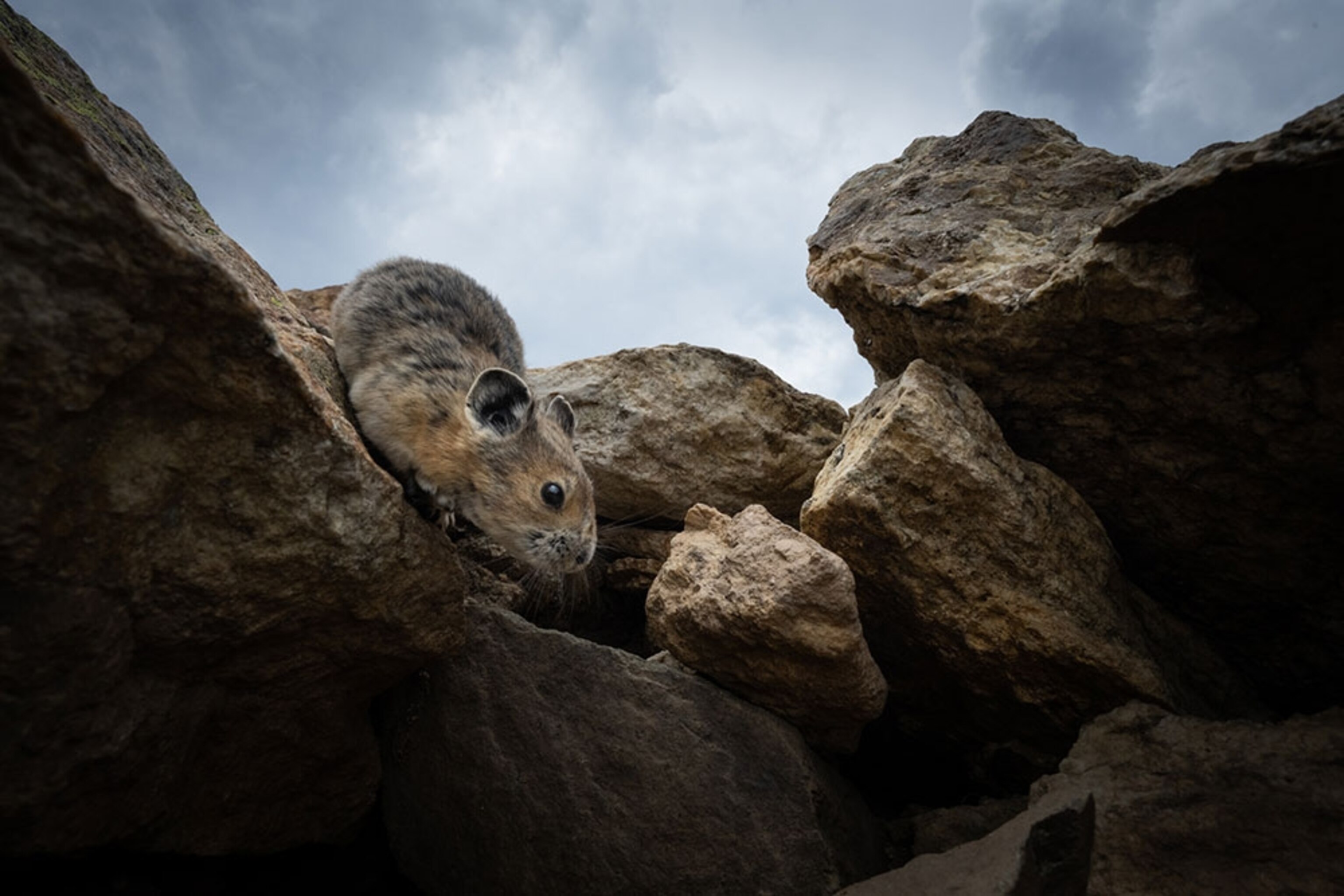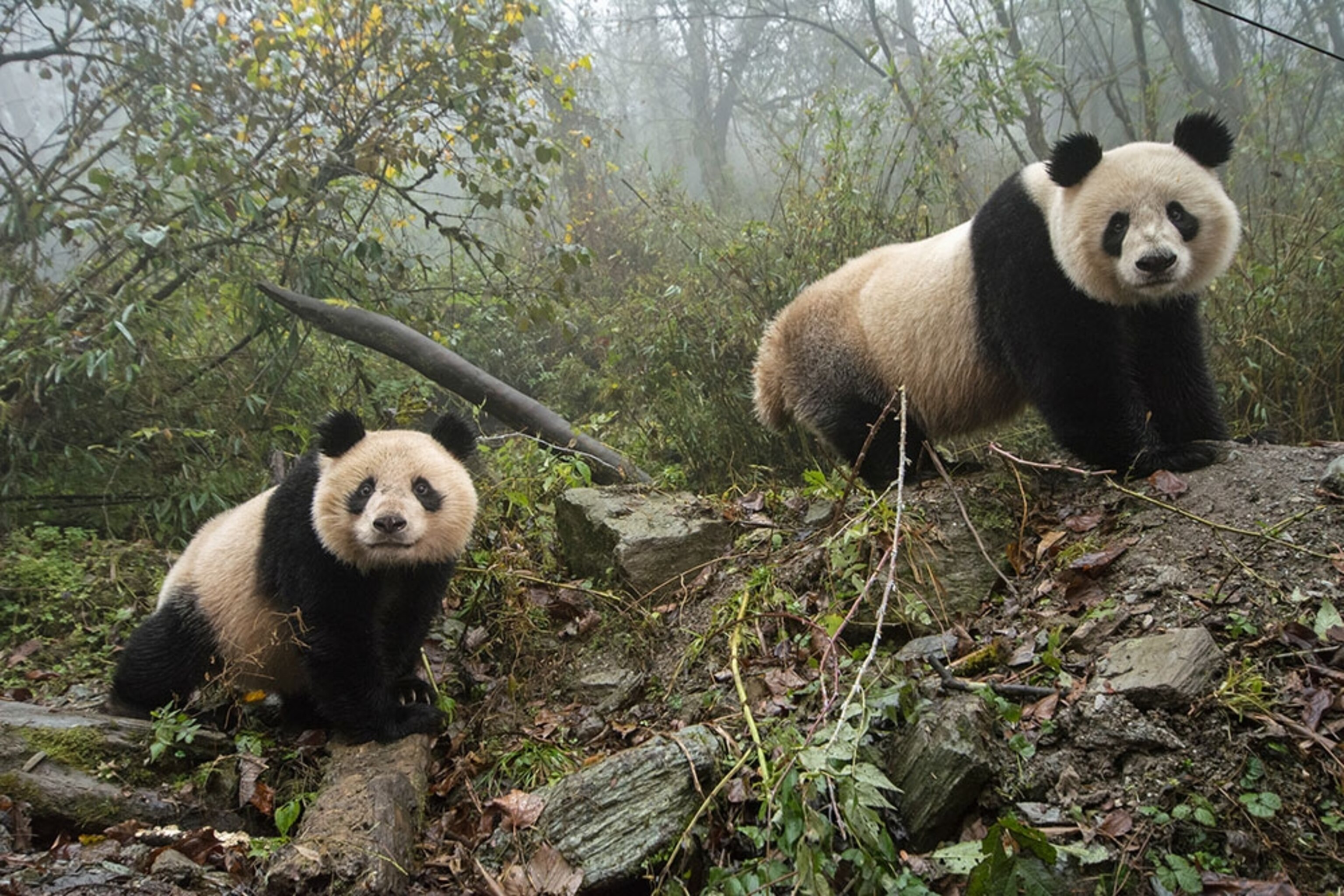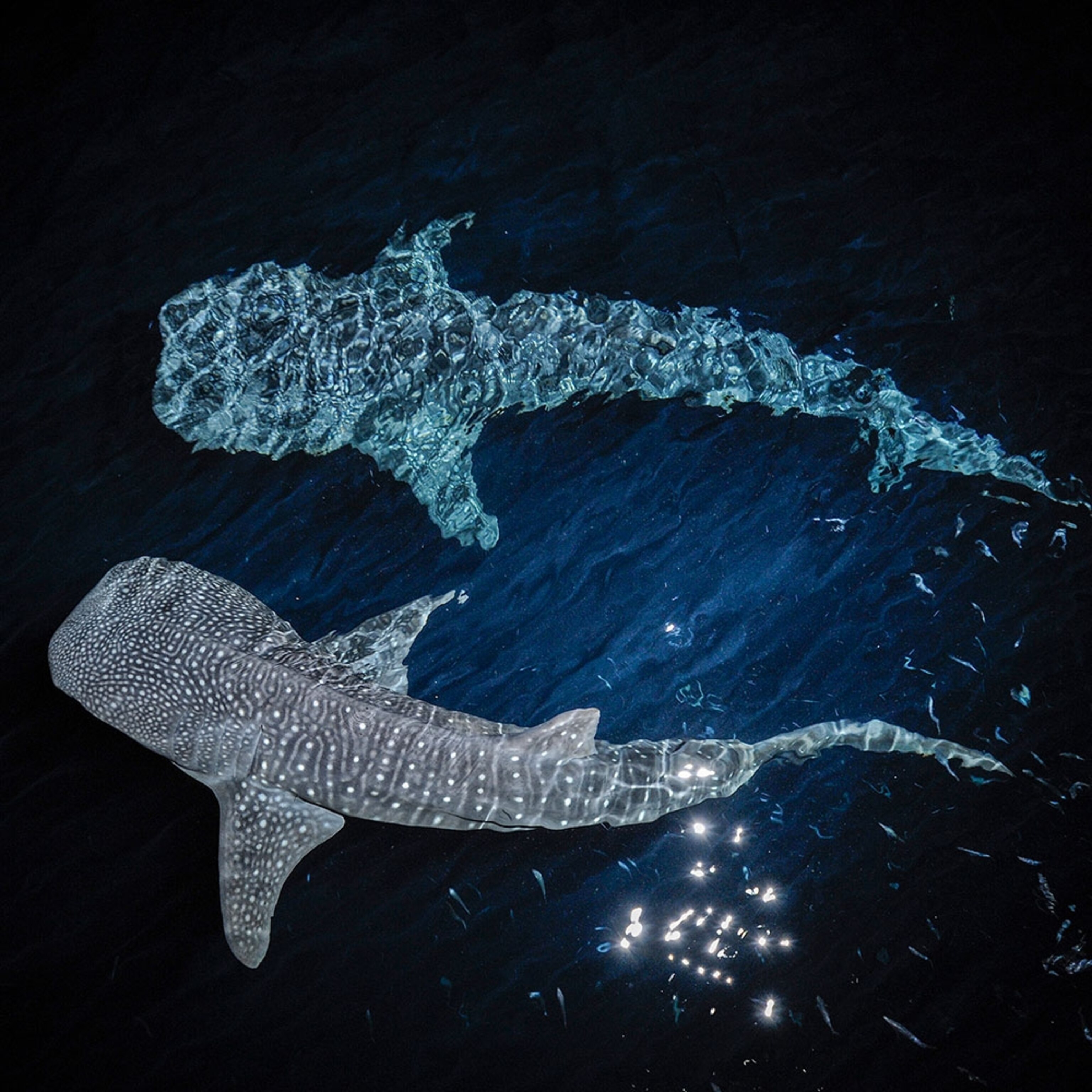
Super cute—and key for scientists
In this newsletter, pandas leave the endangered list; where the biggest sharks go; cougar removed from Bronx apartment; and a female bird that masquerades as male … to deter bullies.
This article is an adaptation of our weekly Animals newsletter that was originally sent out on September 2, 2021. Want this in your inbox? Sign up here.
By Rachael Bale, ANIMALS Executive Editor
On a cold and damp hike above tree line in the southern Rocky Mountains two Saturdays ago, it was just me and my husband on the trail, socked in by mist. Suddenly, cutting through the gusting wind and the huffing and puffing of our breathing, came the squeal of a dog’s squeaky toy.
We paused, holding our breath midway across the talus—a stream of broken rocks cutting across the trail and down the slope of the mountain. Then a rock twitched. I focused my eyes. Not a rock, but a small mammal, about the size and shape of a furry russet potato (a description so perfect I’m borrowing it from Amanda Mascarelli’s new story). Head thrust forward, it intermittently opened its mouth and let out a squeak that seemed to take full-body effort.
An American pika. The longer we stayed still, the more we saw. Some were stationed on top of rocks, squeaking to tell us to stay away. Some were scurrying back and forth, mouths stuffed with grasses and flowers to build up their winter food stash. (Pictured above, a pika as it moves into its rocky den.)
I was more than a little thrilled. We’d just published a story on how plateau pikas in Asia survive brutal winters without hibernation, and I’d just assigned a story on the Pika Patrol, a group of volunteers with the Colorado Pika Project who hike to high-elevation sites to collect data and help scientists monitor pikas. I’d been waiting to see one since we moved to Colorado more than a year ago, and here were a dozen right in front of me. (Pictured below, Pika Patrol volunteers making another pika sighting.)
It turns out pikas are good for a lot more than just being super cute. Because they’re so perfectly adapted to living in harsh, high-alpine habitats, even the smallest changes to their environment affect them. That’s why scientists look to them as an “indicator species” for climate change—monitoring pikas helps them detect changes early, Mascarelli reports for Nat Geo.
So do yourself a favor. Check out Kristi Odom’s photos of adorable pikas and the Pika Patrol, and while you’re at it, read more about why it’s so important to study and protect them.
Do you get this newsletter daily? If not, sign up here or forward this to a friend. And if you think there’s another animal cuter than the pika, let us know!
TODAY IN A MINUTE
No U.S. military service dogs left behind: The Pentagon said it's not true that it abandoned military service dogs in cages at the airport when U.S. personnel left Afghanistan. Some dogs connected to security services were left at the airport, but the Pentagon said those dogs were never in its care, USA Today reports.
On the other hand: A flight out of Afghanistan carrying animals away from the Taliban left employees of an animal rescue group behind, the Guardian reports. The charity spirited out as many as a hundred dogs and 70 cats on a chartered flight to London. Acknowledging the staff left behind in Kabul, the group called the mission “a partial success.”
Crowded apartment: Officials confiscated an 80-pound cougar from a New York City apartment, the AP reports. As one Twitter reader commented, “Every dog in the building knew it was there.”
THE BIG TAKEAWAY
Beyond the cheery headline: Celebration greeted China’s declaration that pandas are not endangered anymore. Yay, but: Despite the hundreds of pandas in captivity worldwide, only 14 have ever been reintroduced to the wild. Of those, nine have survived. Widespread deforestation and habitat fragmentation have restricted pandas in the wild to less than one percent of their historic range, Kyle Obermann writes for Nat Geo. (Above, a captive giant panda and her cub, photographed by Nat Geo Explorer Ami Vitale in a Sichuan research center.)
INSTAGRAM OF THE DAY
Gentle giants: For a few months every winter, large numbers of the biggest shark species gather in the Gulf of Tadjoura off the coast of Djibouti. They feast on prolific plankton blooms induced by oceanographic upwelling, spurred on by fierce desert winds. Whale sharks grow as large as a whale—the largest recorded was bigger than a sperm whale, measuring 61.7 feet long—but they are actually true sharks, Stella Diamant, founder of the Madagascar Whale Shark Project tells Nat Geo. Photographer and Nat Geo Explorer Thomas Peschak shot these whale sharks gathering in the tropical waters of the Gulf. Subscribers can dive deeper with this look at how shark populations are tanking.
Subscriber exclusive: My shark photo went viral, inspiring fakes
IN A FEW WORDS
My role in life is to give people hope, because if you run out of hope, we may as well give up.
Jane Goodall, Primatologist, Nat Geo Explorer
THE LAST GLIMPSE
Masquerading as male: Scientists are increasingly finding examples of female birds with showy, colorful plumage like males. Some female white-necked jacobins sport flashy plumage instead of their usual brown to avoid social harassment from other hummingbirds while feeding, new research finds. “Just looking like males seems to deter bullies,” says Jay Falk, an evolutionary ecologist at the University of Washington. (In the image above, shot by Nat Geo Explorer Joel Sartore, a female hummingbird.)
Video: Watch the breathtaking slow-motion maneuvers of a hummingbird in flight
This newsletter was curated and edited by David Beard and Monica Williams, and Jen Tse selected the images. Do you have an idea or a link for the newsletter? A personal choice for cutest animal? Let us know at david.beard@natgeo.com.




